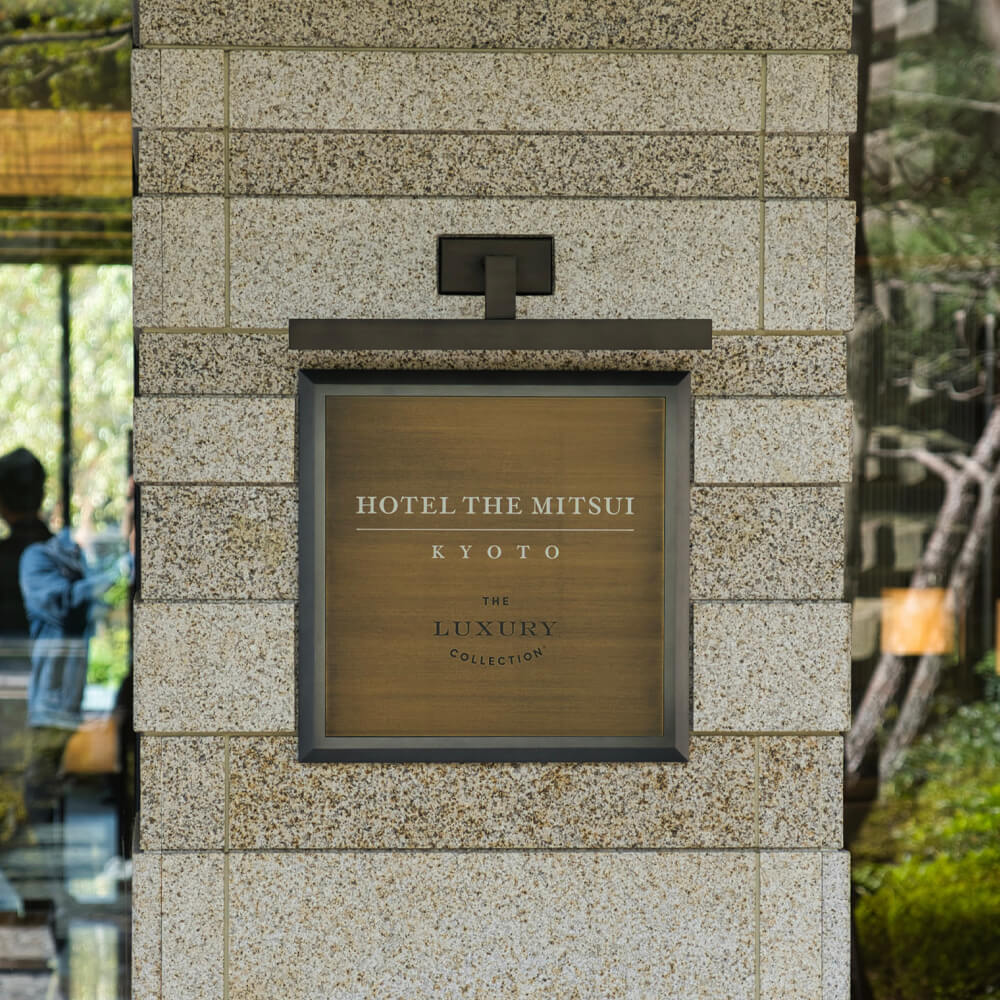Hotel Collection A Comprehensive Guide
Hotel collection offers a compelling opportunity for both guests and owners. This comprehensive guide explores the multifaceted aspects of managing a hotel collection, from defining its various types and models to effective marketing strategies and operational efficiency.
The guide dives into the crucial elements of a successful hotel collection, including defining the key characteristics, exploring different types and models, and understanding the operational and managerial aspects of such a venture. It covers everything from consistent guest experiences and brand building to maximizing efficiency and streamlining processes across multiple hotels.
Defining Hotel Collections

A hotel collection represents a curated portfolio of hotels, rather than a single entity or a large chain. This carefully selected group of properties often shares a common brand identity, target market, or operational philosophy, but maintains individual management and operational independence. This structure offers a unique approach to hospitality, providing both guests and owners with distinct advantages.
Hotel collections are strategically designed to capitalize on complementary strengths and geographical positioning, allowing for a wider reach and a more diversified customer base. They provide a greater variety of experiences and options than a single hotel or a monolithic chain, while still maintaining a unified and recognizable brand.
Hotel Collection Characteristics
Hotel collections are distinguished by a shared brand identity that guides the overall experience. This can include a particular style, theme, or target demographic. Individual hotels within a collection retain their unique character and services, but they work together to offer a wider range of choices and destinations. For example, a luxury hotel collection might feature properties in different cities, each with its ambiance, while maintaining a consistent level of service and quality.
Types of Hotel Collections
Hotel collections can be categorized by their target market and design. Luxury collections often focus on high-end experiences, offering amenities like fine dining, bespoke services, and exclusive access. Budget-friendly collections, on the other hand, provide accessible accommodations and services without compromising quality, attracting a wider range of travelers. Themed collections focus on a specific niche, such as historical sites, adventure destinations, or eco-tourism experiences, appealing to specific interests.
Hotel Collection Models
Different models govern the operational structure of hotel collections. Franchising allows individual hotels to maintain autonomy while adhering to brand standards and receiving support from the collection. Management contracts involve the collection and management of the hotels’ operations, ensuring consistency and efficiency. Other arrangements, such as joint ventures or partnerships, can also structure the relationships within a collection.
Comparison: Single Hotel, Chain, and Collection
| Feature | Single Hotel | Hotel Chain | Hotel Collection |
|---|---|---|---|
| Ownership | Single owner | Multiple owners | Multiple owners/partners |
| Brand Identity | Unique brand | Standardized brand | Shared brand with individual identities |
| Management | Direct management | Centralized management | Independent management with shared support |
| Geographic Reach | Limited to one location | Wider geographic reach | Wider reach with strategically located properties |
| Guest Experience | Unique experience at a single location | Consistent experience across locations | Diverse experience with shared identity |
Marketing and Branding Hotel Collections

Effective marketing and branding are crucial for a hotel collection to stand out in the competitive hospitality industry. A strong brand identity fosters customer loyalty, drives repeat business, and ultimately contributes to the long-term success of the collection. This section explores strategies for promoting hotel collections, emphasizing brand building and customer loyalty across different types of properties.
A comprehensive marketing strategy for a hotel collection must consider the unique characteristics and target audience of each hotel within the portfolio. This includes understanding the specific needs and desires of potential guests, whether they are seeking luxury experiences, budget-friendly options, or a blend of both. A successful campaign highlights the distinct value proposition of each hotel, while simultaneously maintaining a consistent brand identity across the entire collection.
Effective Marketing Strategies
A well-defined marketing strategy is essential for promoting a hotel collection. This strategy should encompass a variety of channels, from online marketing and social media engagement to public relations and partnerships. Targeting the specific needs and desires of potential guests is paramount to maximizing the impact of marketing efforts.
- Digital Marketing: Utilizing websites, social media platforms, and online travel agencies (OTAs) is critical. A user-friendly website, visually appealing social media content, and strategic partnerships with OTAs are key to reaching a broader audience.
- Public Relations: Building relationships with travel journalists, bloggers, and influencers can generate positive media coverage and increase brand awareness. Participating in industry events and showcasing the unique aspects of the collection are also important aspects of public relations.
- Loyalty Programs: Implementing a robust loyalty program can encourage repeat business and foster customer loyalty. Rewarding frequent guests with exclusive perks and benefits can significantly increase customer retention.
- Targeted Advertising: Employing targeted advertising campaigns on social media and search engines can effectively reach potential guests based on their demographics, interests, and travel preferences.
Marketing Strategies for Different Hotel Types
The approach to marketing varies significantly depending on the type of hotel collection. Luxury collections often focus on exclusivity and personalized experiences, while budget-friendly collections emphasize value and affordability.
- Luxury Collections: Marketing campaigns for luxury collections emphasize high-end imagery, exclusive amenities, and personalized services. Focus on high-quality photography and video content, showcasing the luxurious aspects of the hotel. Direct marketing to affluent travelers through targeted advertising campaigns is crucial.
- Budget-Friendly Collections: Marketing campaigns for budget-friendly collections highlight value, affordability, and convenient locations. Simple, clean visuals, emphasizing affordability, are key. Utilizing OTAs and social media to showcase deals and discounts is vital.
Successful Branding Campaigns
Numerous hotel collections have achieved remarkable success through well-crafted branding campaigns. These campaigns often focus on a unique selling proposition (USP) that differentiates the collection from competitors.
- Example 1: The Four Seasons Hotels and Resorts has built a strong brand identity based on exceptional service and luxury. Their branding emphasizes personalized experiences, top-tier amenities, and unwavering commitment to guest satisfaction. The consistency of service and quality across all properties is a core element of their success.
- Example 2: Budget-friendly hotel chains like Motel 6 leverage their affordability and convenience to attract cost-conscious travelers. Their campaigns frequently highlight competitive pricing and strategic locations.
Creating a Consistent Brand Identity
Maintaining a consistent brand identity across all hotels in a collection is crucial for brand recognition and trust. This includes aligning visual elements, messaging, and service standards.
- Visual Identity: Using a consistent logo, color palette, and typography across all marketing materials ensures brand recognition. The design should be consistent across websites, social media profiles, and print materials.
- Brand Voice: Establishing a clear brand voice (tone and style of communication) is vital. The tone should be consistent across all communication channels, reflecting the overall brand personality.
- Service Standards: Ensuring consistent service standards across all hotels in the collection builds trust and reinforces the brand promise. Employee training programs and ongoing monitoring of service quality are essential.
Compelling Brand Story
A compelling brand story provides context and meaning to the hotel collection, connecting with customers on an emotional level.
| Element | Description |
|---|---|
| Mission Statement | Clearly defines the purpose and values of the collection. |
| Vision Statement | Articles about the future aspirations and goals of the collection. |
| Values | Highlights the core principles that guide the collection’s operations. |
| History | Provides a narrative of the collection’s past, showcasing its evolution. |
| Unique Selling Proposition (USP) | Defines what sets the collection apart from competitors. |
| Target Audience | Describes the ideal customer profile. |
| Brand Personality | Captures the emotional essence of the collection. |
Guest Experience and Services in Hotel Collections

Source: freshworkspace.com
A well-defined hotel collection hinges on delivering a consistent and exceptional guest experience across all its properties. This involves more than just a shared brand identity; it demands meticulous attention to detail in service delivery, amenity provision, and guest interactions. A positive guest experience fosters loyalty, encouraging repeat stays and positive word-of-mouth referrals.
A strong hotel collection recognizes that a uniform experience is crucial for building brand trust and loyalty. This consistency allows guests to anticipate and appreciate the level of service they receive, regardless of the specific hotel within the collection. Furthermore, maintaining a consistent brand identity and quality of service throughout the collection is vital for establishing a reputation for excellence.
Consistent Service Standards and Amenities
Maintaining consistent service standards across a hotel collection requires careful planning and execution. This includes establishing clear service protocols, training programs for staff, and providing the necessary resources to ensure service excellence at every property. Standardized amenities contribute to this consistency, providing guests with familiar and appreciated features, fostering a sense of familiarity and trust. For instance, a standardized breakfast menu, a particular style of room service, or consistent Wi-Fi speed throughout the collection can enhance the overall experience.
Maintaining a Uniform Guest Experience
Ensuring a uniform guest experience across all hotels in a collection is essential for brand cohesion and customer satisfaction. This uniformity builds trust and fosters loyalty by allowing guests to anticipate a certain level of quality and service at any property within the collection. Consistent service protocols, staff training, and standardized amenities contribute significantly to this uniformity. For example, using a standardized check-in process and consistent communication styles across all hotels will significantly improve the guest experience.
Improving Guest Satisfaction
Guest satisfaction is paramount in a hotel collection. Implementing effective feedback mechanisms allows for continuous improvement and ensures that guest concerns are addressed promptly. Regular guest surveys, online review monitoring, and direct communication channels are essential for gathering feedback. Moreover, well-structured staff training programs are vital to cultivating the skills and knowledge needed to address guest needs effectively. This includes training on conflict resolution, customer service best practices, and proactive service techniques. Training on understanding and addressing guest needs, including diverse preferences and requirements, is essential.
Seamless Transition Between Hotels, Hotel Collection
Creating a seamless transition between hotels within a collection is crucial for repeat guests. This involves streamlining reservation processes, ensuring consistent communication channels, and providing a familiar experience across properties. For instance, a streamlined online booking platform that allows guests to easily book across the collection and access their previous reservation details. Offering loyalty programs and recognizing returning guests with personalized amenities or experiences enhances the overall transition.
Checklist for Evaluating Guest Satisfaction
The following table provides a checklist for evaluating guest satisfaction within a hotel collection.
| Criterion | Evaluation | Action Plan |
|---|---|---|
| Check-in/Check-out Process | Was the process smooth and efficient? | Identify and address any bottlenecks or inefficiencies in the process. |
| Room Amenities | Were the amenities as expected and satisfactory? | Ensure consistent quality and availability of amenities. |
| Service Quality | Was the service attentive and responsive? | Implement staff training programs to improve service skills. |
| Overall Experience | Did the guest feel valued and satisfied? | Identify areas for improvement based on feedback. |
| Communication | Was communication clear and helpful? | Ensure consistent communication protocols across all properties. |
Operational Efficiency and Management in Hotel Collections

Managing a hotel collection presents unique operational advantages, allowing for significant improvements in efficiency and cost savings. By centralizing resources and streamlining processes across multiple properties, collections can achieve economies of scale and deliver enhanced guest experiences. This approach necessitates strong communication and collaboration among hotels, which, when effectively implemented, can dramatically improve overall performance.
Centralized management enables leveraging economies of scale in areas like purchasing, marketing, and technology, thus reducing individual hotel costs and maximizing profitability. Streamlining operations across the collection yields substantial benefits in terms of resource optimization and improved service delivery.
Economies of Scale and Centralized Resources
Effective management of a hotel collection leverages economies of scale. Purchasing in bulk for supplies like linens, toiletries, and cleaning products can reduce per-unit costs compared to individual hotel purchases. Furthermore, shared marketing campaigns and distribution channels can amplify the reach and impact of promotional efforts, leading to greater brand visibility and increased bookings. Centralized reservations systems and revenue management tools enable optimized pricing strategies and efficient inventory control across the collection, maximizing revenue generation.
Streamlining Processes and Procedures
Implementing standardized operating procedures (SOPs) across all hotels in a collection is critical for maximizing efficiency. This includes consistent procedures for check-in/check-out, housekeeping, maintenance, and guest service. Using a centralized reservation system ensures consistent information across all hotels, reducing errors and improving the guest experience. Shared training programs for staff can ensure consistent quality of service and elevate the guest experience.
Managing Reservations, Inventory, and Staff
A robust centralized reservation system is essential for managing reservations across the collection. This system should allow real-time updates of availability, reservations, and cancellations across all hotels. This system also facilitates inventory management, enabling efficient allocation of rooms and other resources across the collection. Centralized human resources management enables efficient staff scheduling, training, and performance evaluation across all hotels, ensuring consistent quality of service.
Importance of Communication and Collaboration
Strong communication and collaboration between hotels in the collection are paramount for success. Regular meetings and communication channels facilitate the sharing of best practices, feedback, and insights. Data sharing and analysis across hotels provides a comprehensive view of the collection’s performance and identifies areas for improvement. Collaboration fosters a supportive environment where hotels can learn from each other and collectively enhance their operational performance.
Sample Organizational Chart for a Hotel Collection Management Team
| Department | Role | Responsibilities |
|---|---|---|
| Collection Management | Director of Operations | Oversees all operational aspects of the collection, including budget, strategy, and performance. |
| Collection Management | Director of Revenue Management | Develops and implements revenue management strategies for the entire collection. |
| Collection Management | Director of Human Resources | Manages and trains staff across all hotels in the collection, ensuring consistent service quality. |
| Collection Management | Director of Technology | Manages and maintains the collection’s technology infrastructure, including reservation systems and data management. |
| Individual Hotel | General Manager | Manages day-to-day operations at each hotel. |
| Individual Hotel | Front Desk Manager | Manages reservations, check-ins, and check-outs at the hotel. |
Wrap-Up
In conclusion, a well-managed hotel collection presents a significant opportunity for growth and profitability. By understanding the key elements of defining, marketing, and operating a collection, owners can enhance the guest experience, build a strong brand identity, and optimize operational efficiency. This guide provides a solid foundation for navigating the complexities of this exciting sector.





